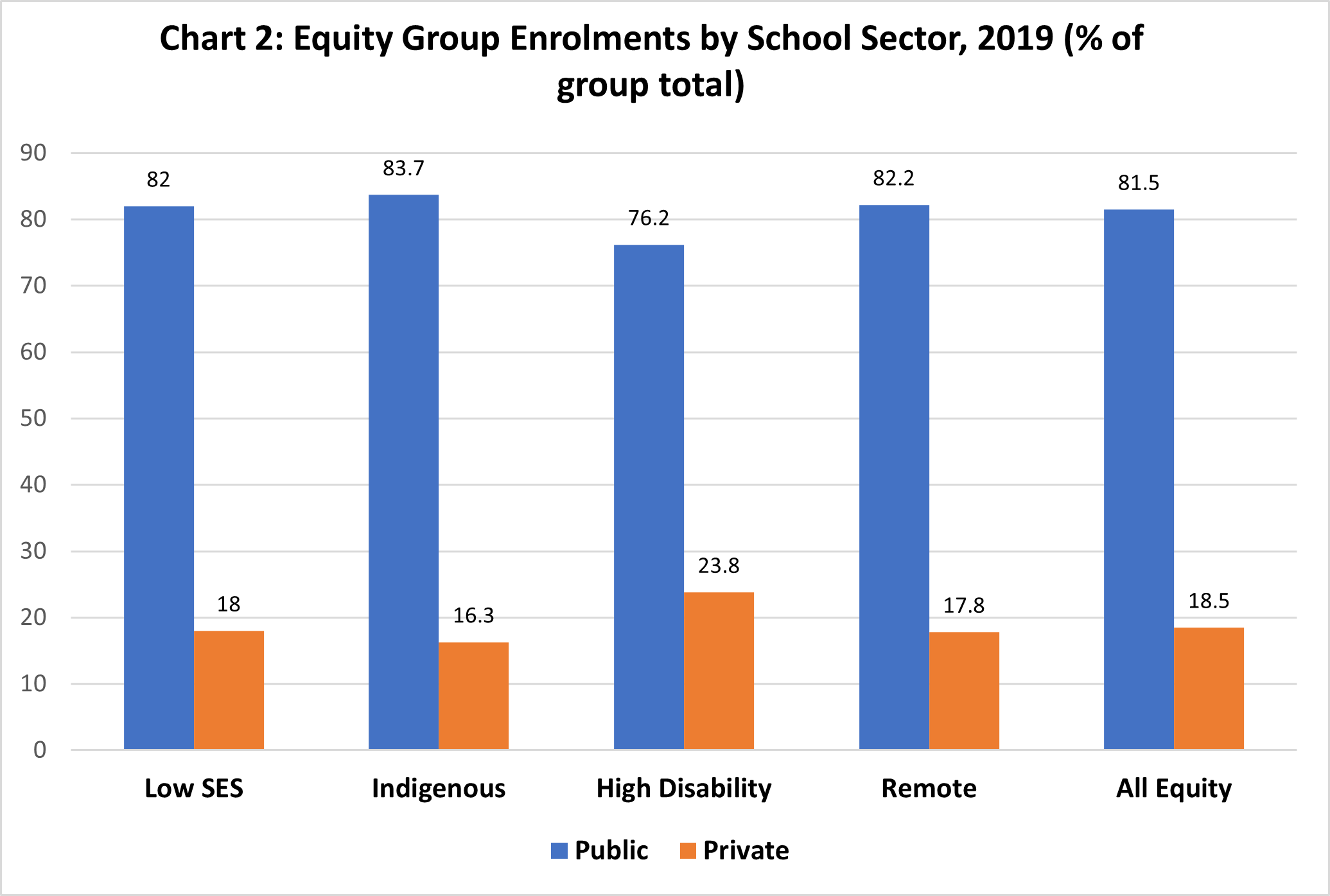Nearly half of students at public schools are considered disadvantaged – either living remotely, with a disability, having an Indigenous background or from a low socio-economic background – compared to just 20 per cent at private schools, yet private schools have far more income. Trevor Cobbold reports.
Public schools continue to bear the burden of education disadvantage. They enrol more than twice the number of disadvantaged students than private schools but have far less income. The burden of disadvantage of public schools is three times that of private schools when taking into account their lower income.
Figures published by the Australian Bureau of Statistics (ABS) and the Productivity Commission earlier this year show that disadvantaged students account for 46% of public school enrolments compared to only 20% in private schools.
Yet income per student was $23,956 in Independent schools, $17,153 in Catholic schools and just $15,520 in public schools according to 2019 figures.
Low SES students comprise 30.5% of public school enrolments compared to 12.8% in private schools while Indigenous students account for 7.4% of enrolments in public schools compared to 2.8% in private schools. See Chart 1 below.
Students with high disability comprise 5.6% of public school enrolments and just 3.4% of private school enrolments; remote area students comprise 2.3% of public school enrolments compared to 1% of private school enrolments.
The overall proportion of disadvantaged students in public schools is 45.9% compared to 19.9% in private schools.

Sources: ABS, Schools Australia 2020. Productivity Commission, Report on Government Services 2021.
The overall proportions of disadvantaged students in the two sectors likely over-estimate the actual levels because there is significant overlap between the different disadvantaged groups. For example, many Indigenous students also come from lower socio-economic backgrounds and many live in remote areas.
However, the figures are an indicator of the compounding effects of multiple sources of disadvantage and this is clearly much larger in public schools than private schools.
More than 80 per cent of all disadvantaged students attended public schools in 2019.
Some 82% of low SES students, 83.7% of Indigenous students and 82.2% of remote area students were enrolled in public schools compared to only 18%,16.3% and 17.8% respectively in private schools (Chart 2 below).
The proportion of high disability students in public schools is slightly lower at 76.2% while 23.8% were enrolled in private schools.

Sources: ABS, Schools Australia 2020. Productivity Commission, Report on Government Services 2021.
While public schools need to do much more with their resources than private schools, they have significantly less income per student than private schools to do this.
The income per public school student of $15,520 was 80% of the average income of $20,088 per student of private schools (Independent and Catholic).
Moreover, income per student in Catholic and Independent schools has increased six to eight times, respectively, compare to that of public schools since 2009. This is mainly due to much larger government funding increases than for public schools.
Public schools starved
The circumstances in which public schools have to operate are deplorable. Society expects public education to deliver a quality education for all students. Yet governments continue to starve public schools of the resources they need to meet the challenge of disadvantage. Public schools are vastly under-funded for the challenges they face while private schools are vastly over-funded for what they do.
This is likely to continue under current Commonwealth and state government funding arrangements, with the advantage of private schools projected to accelerate over the rest of the decade to 2029. Commonwealth funding for private schools will increase under special deals not available to public schools, while bilateral funding agreements between them and the Commonwealth allow the states to continue to under-fund public schools.
This portends continuing disadvantage in education and huge gaps in education outcomes between advantaged and disadvantaged students. Australia’s school funding system needs a complete overhaul. Instead of supporting privilege in education it needs to focus on increasing education outcomes for disadvantaged students and improving equity in education.
Trevor Cobbold is National Convenor of Save Our Schools.

